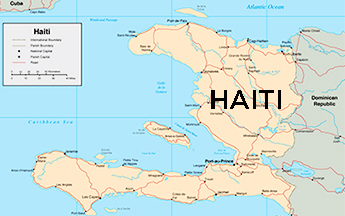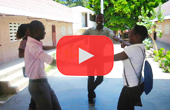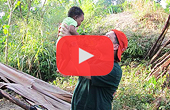Haitians living in Miami turned to radio, television, and social media to
get news about the earthquake.
When the earthquake struck Port-au-Prince in January 2010, one of the epicenters of conversation about what was happening on the island nation occurred in Miami, home to the largest diaspora of Haitian expatriates.
In Little Haiti—an area in the northern part of the city sandwiched between I-95 and U.S. 1—Haitians huddled around radios and television sets.
“Haitians living in Miami found out about relatives and friends in two ways: radio and social media listserves, such as Sakapfet, which quickly became posting boards of what was happening and where people were last seen,” says Sallie Hughes, associate professor of journalism and Latin American studies at the University of Miami School of Communication.
In the two years prior to the earthquake, Hughes and two of her colleagues were deep in their analysis of Haitian community media in greater Miami. Though the research was ready to be analyzed when the earthquake struck, the researchers felt they had an ethical responsibility to continue their work and cover the disaster.
As a media researcher, I quickly considered how this disaster would change the U.S. mainstream media’s frame on Haiti.
Professors Yves Colon and Tsitsi Wakhisi monitored Haitian radio for hours a day to analyze conversations as they happened. The local Haitians tuned in to AM radio—in both English and Creole—for news about the disaster, hoping for tidbits of information on family and friends, and the extent of the damage. They turned to television news for more updates, even if they couldn’t understand what was being said by the newscasters.
“In the first days of the catastrophe, they all went to English-speaking television, whether they could understand it or not,” reported Wakhisi, associate professor of professional practice in journalism at the UM School of Communication and co-author of the Haitian media analysis compiled before and during the earthquake.
Creole-language radio let local Haitians participate in talk shows and call-in programs, where they were able to hear about how the Haitian government was responding to the crisis, and glean some news about family and friends. The transnational community of Haitians in Miami participated in the political and economic discussions of their homeland, laying responsibility on the politicians.
On the island, the telecommunications infrastructure had crumbled. BlackBerry Messenger was one of the few digital messaging systems still working. Cellular operators, however, made quick repairs to get their networks running, which allowed for inbound calls to Haiti. The mostly Creole-speaking Haitian community in Miami would watch the English-language news coverage while using their cell phones to try to reach friends and family members in Haiti.
Locally, members of the Haitian community also relied on social media for news coming out of the island. They were not alone.
Immediately following the 2010 earthquake, the PEW Research Journalism Project found that Twitter played a role in the spread of information. News feeds were quickly taken over with news reports coming out of the country, and tweets quickly turned from information into vital calls for aid.
PEW also discovered that two different levels of activity emerged on Twitter. In terms of posts that linked to other reports, Haiti was the second largest trending topic—receiving 15 percent of the news links for the entire week. For the two days immediately following the Tuesday earthquake, 36 percent of news links being tweeted were mentions of the natural disaster. The other activity that gained immediate traction was tweets that put out a call to action – urging users to donate money or supplies to the ailing country.
Social media—and Twitter specifically—became a central tool in the fundraising efforts that raised millions of dollars in aid for the country. By the end of the week the use of social media helped to raise more than $8 million in relief, according to a CNN report.
The Twitter-tracking service Sysomos recorded 2.3 million tweets that included the word “Haiti” or “Red Cross” between January 12 and January 14, 2010. There were also 189,024 tweets that included "90999," the number that was used to text message a donation to the American Red Cross. Social media users who donated to the relief effort were able to post a message about their contribution, therefore alerting more people to the trend of charitable giving through social media.
Other online platforms played a role as well. On Facebook, a number of Haiti-related groups were formed within hours of the quake. According to CNN, the largest such group—Earthquake Haiti—had nearly 170,000 members by the Thursday after the disaster.
Even today, though, Haiti’s communications infrastructure is underdeveloped. There remains limited connectivity to the Internet, yet Haitian community media continues to be a key resource for Haitians in Miami.
“As a media researcher, I quickly considered how this disaster would change the U.S. mainstream media’s frame on Haiti,” Hughes says. “It raised a level of consciousness, and we noticed that the frame on Haiti could be broader. Haiti should not only be news when a disaster happens, but that is unfortunately most of the news in Latin America and the Caribbean.”



